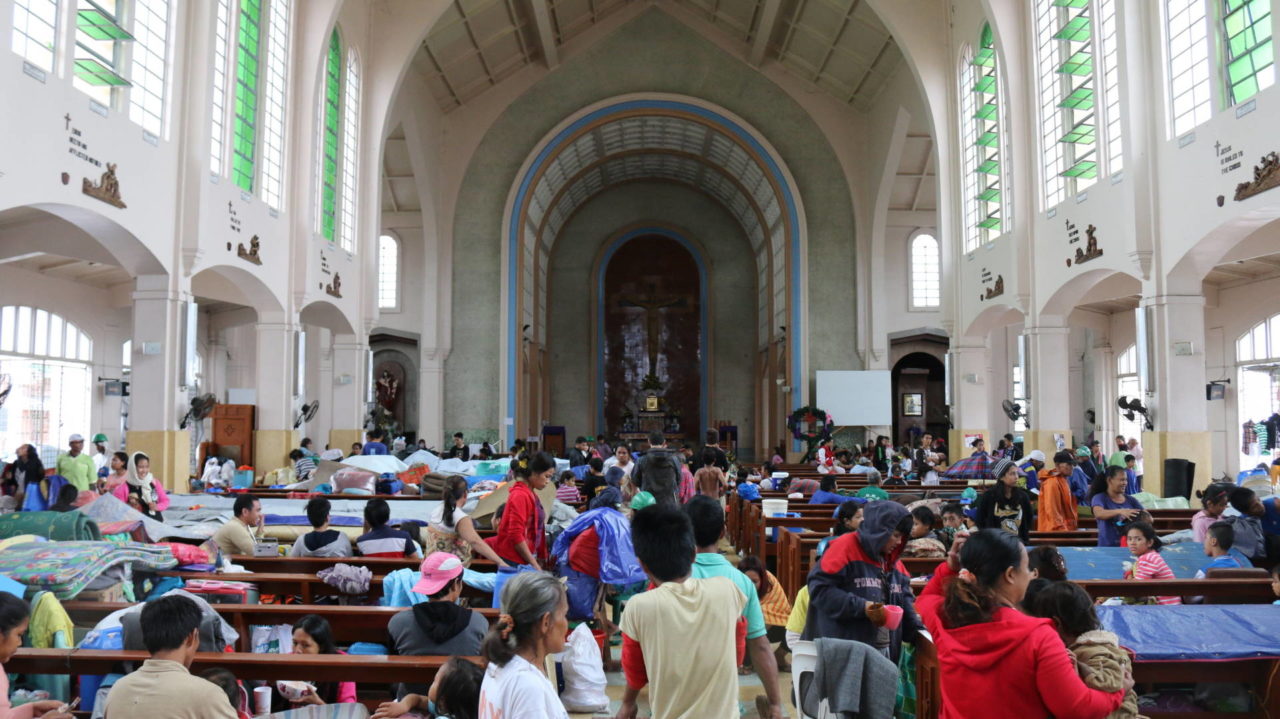
Tacloban, PHILIPPINES (December 7, 2014) — More than 100,000 people fled to evacuation centers in Tacloban ahead of Typhoon Hagupit. An estimated 30,000 stayed at the 49 evacuation camps designated by the city government as early as two to three days before the projected landfall. As the typhoon pounded the city, half of it’s population was holed up safely in the camps, wondering what would be left behind. Tacloban was one of the cities hit hardest by Typhoon Haiyan last year. The storm killed more than 6,000 and left many more homeless in November of last year.
World Vision started distribution of emergency essentials today, composed of water and hygiene kits, for 2,500 families in three evacuation camps. After coordination with the city governments overseeing the camps, sanitation was among the identified needs. The kits are composed of soaps and detergents, toothbrushes, sanitary pads, underwear for men and women, nail cutters and malong (shawl), which is often used as substitute for a blanket in cold weather.
World Vision’s zone manager for Tacloban, Ajab Macapagat, said that in a meeting with the social welfare officials, water and hygiene were identified as urgent needs: “The queue was long for drinking water in many camps when we went around for assessment.”
At least 5,000 have flocked for refuge in one state university. Many such camps are churches, schools and public gymnasiums, which do not have enough toilet and bathroom facilities to accommodate thousands.
In the aftermath of the typhoon, Tacloban Mayor Alfred Romualdez lauded achieving the zero casualty target and credited this to the people who cooperated quickly and made the evacuation organized.
Operations Director Jennifer MacCann said, “World Vision will focus on helping the most vulnerable families who will likely stay in the camps for a week or so while they are fixing their houses again.”
MacCann expects the relief team to start the distribution today and complete it in a day or two to address the people’s urgent needs. World Vision is committed to helping 55,000 affected people in coming weeks as assessment results are finalized.
Fatima Luza, 54, a single mother, lamented her losses after the typhoon. Her house was barely finished from being rebuilt and the small roadside eatery she has established for livelihood was destroyed. “We will have the same Christmas this year as last. But I am still thankful that we were all safe,” Luza said with sadness.
World Vision’s response director, Andrew Rosauer, reiterated that commitment, underscoring the trauma that a majority of these survivors are going through from Typhoon Haiyan to Hagupit: “The least we can do is be able to provide for their immediate needs, to ease their suffering and help them one more time to recover.”
Tacloban is still reeling from a power blackout since 3 p.m. yesterday. but mobile phone signals were unhampered, which made coordination and rescue more efficient. Internet connection is still poor, many establishments are closed, and public transport is still limited.
-END-
About World Vision:
World Vision is a Christian humanitarian organization conducting relief, development, and advocacy activities in its work with children, families, and their communities in nearly 100 countries to help them reach their full potential by tackling the causes of poverty and injustice. World Vision serves all people regardless of religion, race, ethnicity, or gender. For more information, please visit www.WorldVision.org/media-center/ or on Twitter @WorldVisionUSA.
Highlights
- People in evacuation centers are in need of water, hygiene products.
- World Vision distributes kits to 2,500 families.
- Assessment teams are identifying needs, taking a first look at damage.